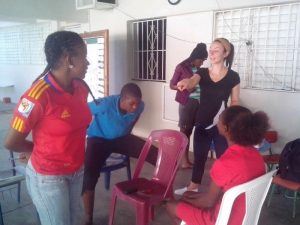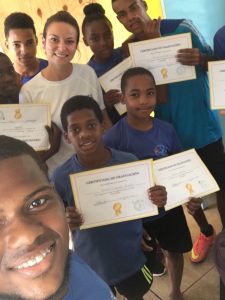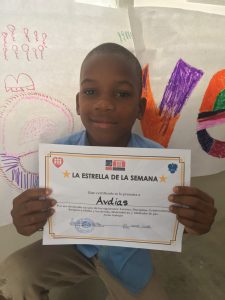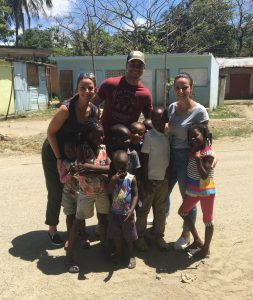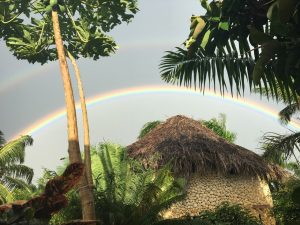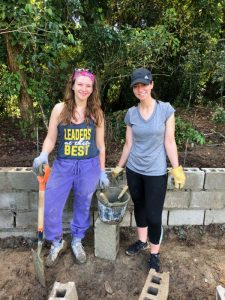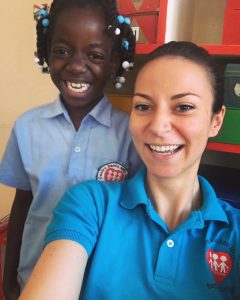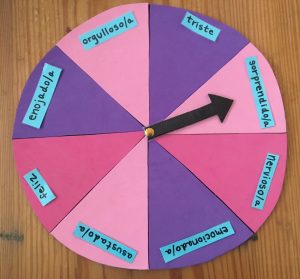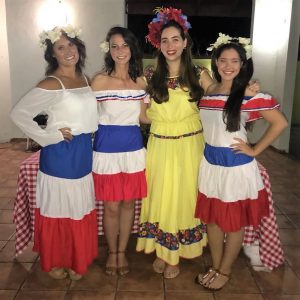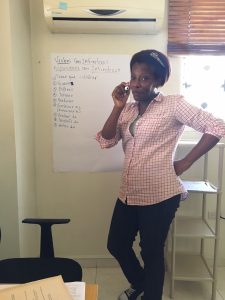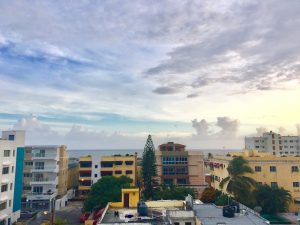It has been about a month since I returned from the Dominican Republic, and I am still feeling a mix of emotions about being back in the U.S. I was going to write this post immediately after I returned, but having waited a bit gave me the opportunity to paint a more accurate picture of the reverse culture shock “W-curve” that I experienced (Reverse Culture Shock, n.d.).
The W-curve starts with the honeymoon phase, then progresses to the crisis phase, the recovery phase, the adjustment phase, and back through the cycle again (Reverse Culture Shock, n.d.). I experienced all of these phases at different times, but I will give you the short version of my emotional roller coaster ride. When I came home, I was excited to be reunited with friends, family, and my bed (especially because I no longer had to mummify myself in a mosquito net). I also enjoyed taking a hot shower for the first time in three months! However, the honeymoon phase did not last long. I began to miss my hectic lifestyle from the Dominican Republic. Although the constant noise of dogs barking, bachata music blasting, and kids playing in the street made for some sleepless nights in the DR, I suddenly felt like I could not fall asleep without it. The silence was deafening. I also felt the urge to hop on the back of a motorcycle and get fresh aguacates y piñas (avocados and pineapples) from the local colmado (corner store), something that I did frequently during my trip. For now, hopping in my car and driving to Wegmans will suffice. My biggest “crisis” came when I started wondering if I will see my students again. I suppose the recovery phase began when I decided that I want to use all of these emotions as motivation to return to the DR in the near future. Just as I had to give myself time to adjust to the culture when I arrived in a foreign country, I had to do the same upon returning home. I feel that I have fully adjusted to being home again, but I don’t want that to lead to taking things for granted. Simply having a reliable source of electricity and running water now feels like a luxury. I hope to carry this sense of appreciation with me for the rest of my life.
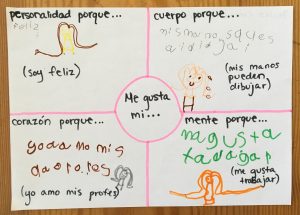
La actividad de autoestima / The self-esteem activity.
When I am missing my second home, I look through photographs, message my old roommates and host family, and sometimes I am able to FaceTime with the teachers during lunchtime to see my students! I also brought some of my students’ projects home with me to remember all the activities we did together. The picture on the left shows a self-esteem activity I did with a girl in third grade. The circle in the middle says “Me gusta mi…” which means, “I like my…” and the student had to fill in each square with things that she likes about herself. The square on the top left says, “I like my personality because I am happy.” The top right square says, “I like my body because my hands can draw.” In the two bottom squares, she wrote, “I like my heart because I love my teachers” and “I like my mind because I like to work.” Reminiscing about my trip is bittersweet. Although I am sad that it is over, I am extremely grateful that I was given the opportunity to have this experience. It was my first time travelling to the Dominican Republic, but it is definitely not my last. I want to thank my readers for embarking on this amazing journey with me. Hasta la próxima.
References
Reverse Culture Shock. (n.d.). Retrieved from https://www.state.gov/m/fsi/tc/c56075.htm
